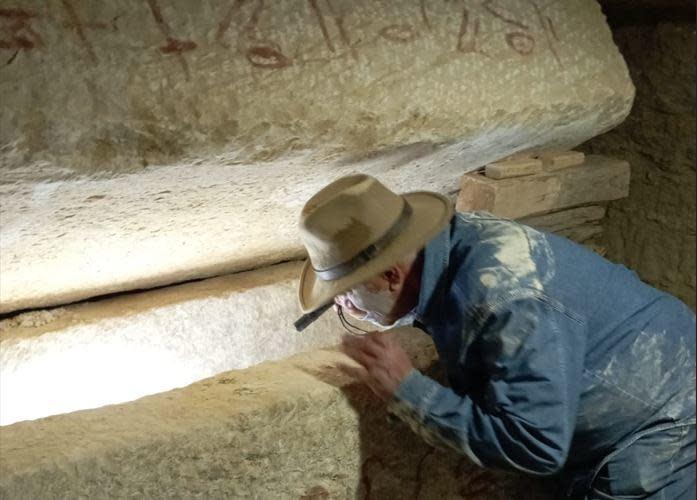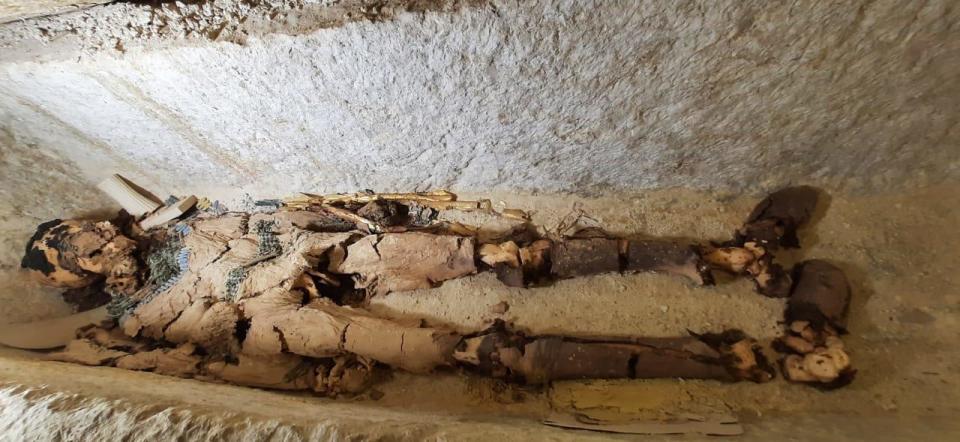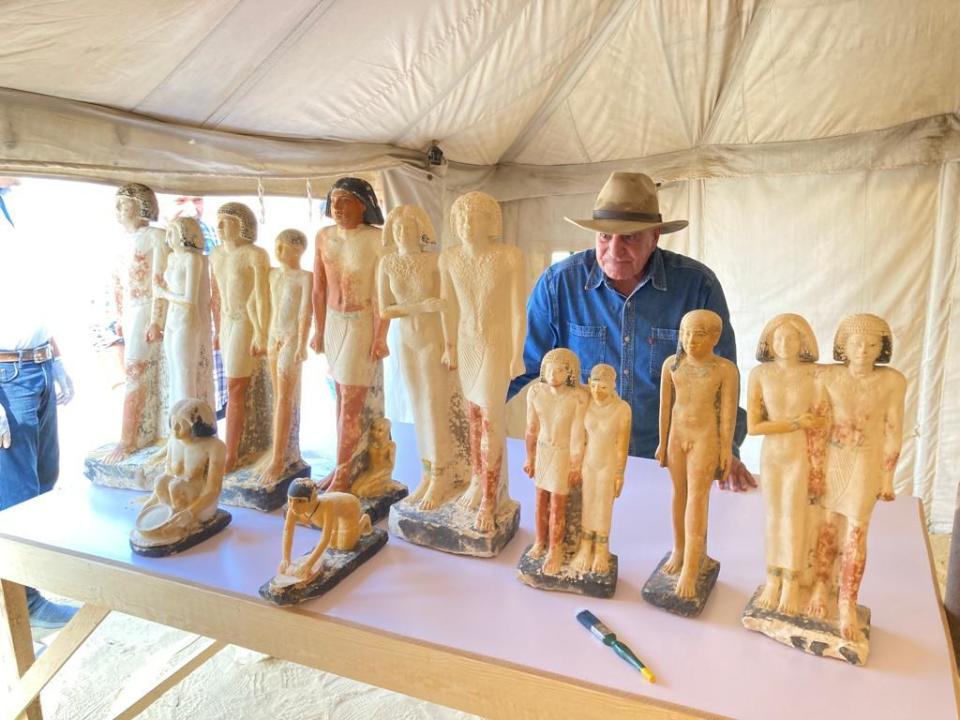Archaeologists find the oldest non-royal mummy ever discovered in Egypt
Cairo — Egyptian archaeologists who have spent years meticulously excavating a site amid the ancient ruins of Saqqara, near Cairo, announced a number of major discoveries on Thursday dating to the fifth and sixth dynasties of Egypt's "Old Kingdom," more than 4,000 years ago. One of the most important was a large, rectangular limestone sarcophagus found at the bottom of a vertical shaft about 50 feet deep.
"The sarcophagus was about 45 tons and the lid was about 5 tons," Dr. Zahi Hawass, the director of the Egyptian excavation team at the Gisr el-Mudir site in the ancient city of Saqqara, told CBS News.

The lid was still sealed onto the sarcophagus with mortar, exactly as it had been left there some 4,300 years ago. It took the archaeologists about two hours of careful work to crack it open.
Inside, they found what Hawass said was the oldest non-royal mummy ever discovered in Egypt. It was also the oldest mummy wrapped in gold leaf ever found in the country, he added.
While the ancient Egyptian at the bottom of the deep shaft was no pharaoh, the elaborate sendoff to the afterlife made it clear they were also no commoner. And there was a name, inscribed on top of the sarcophagus: "HqA-Sps," or Hekashepes.

"Of course, he was important. For someone to make a sarcophagus like this, 15 meters under the ground, he should be a very important man," Hawass told CBS News.
But while Hekashepes will earn his place in the history books, the gold-wrapped mummy wasn't Hawass' favorite new discovery at Saqqara, which is part of a sprawling necropolis that used to be the capital of ancient Egypt, known as Memphis. The famed Giza Pyramids are nearby, within the UNESCO World Heritage site of Memphis.
Among the items displayed by Hawass, a veteran Egyptian archaeologist, and his team on Thursday were 14 stone statues found in another a shaft, about 33 feet deep, dating back to the "Old Kingdom," or the Age of the Pyramids, between 2700 and 2200 BC — possibly even older than the mummy of Hekashepes.

"These statues are quite unique," Hawass said. "This is the first time in this century that such a large number of statues was found in Saqqara."
"Today's discovery tells us more about art in the Old Kingdom, mummification, and also about the people who worked there," Hawass said. "One of the tombs was for a priest who was in charge of the pyramids complex of King Unas, the last king of the 5th Dynasty."
It has been a week of landmark announcements by Egyptian archaeologists, with another team revealing the discovery of a massive burial ground in the ancient city of Luxor, close to the ruins of a "complete" Roman-era city nearby.
21-year-old with autism helps run family T-shirt business
5 former Memphis police officers face murder charges in Tyre Nichols' death
Bolton says Trump’s 2024 campaign is ‘poison’ for GOP and ‘will continue to go downhill’

